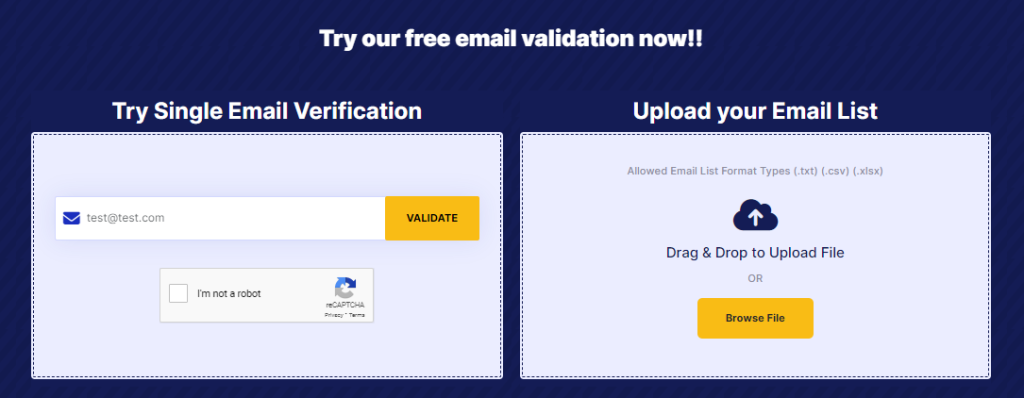Introduction
Email marketing is an excellent method for new businesses to reach out to a lot of people without losing their personal touch. Take Allakando, for example, a Swedish tutoring company. They were able to keep things personal with their extensive customer base through a specialized email strategy.
This strategy included:
- Keeping their emails friendly
- Moreover, Customizing emails for each person when they could
- Sending content that matched what users liked and did
- Automatically sending messages to greet new subscribers
Thanks to these efforts, Allakando watched their email open rates go up and built better relationships with their customers. This shows that email marketing can be an effective way for startups to engage with potential clients in a meaningful way.
Email marketing is essential for startups. It’s a pivotal way to connect with customers without spending too much money and encouraging them to buy your product or service. This article will cover essential email marketing practices for startups. And, you’ll learn about building good email lists with verifier tools, creating appealing messages, using personalization and segmentation, making sure emails look good on phones, improving through A/B testing, and staying within the rules of email marketing. These methods can boost a startup’s email marketing campaign, leading to better engagement and more sales.
Importance of Email Marketing for Startups
The Benefits of Email Marketing
Email marketing gives startups the power to reach out to their audience.
Email marketing can help new businesses connect with customers and increase sales, and it won’t break the bank. It also allows for precise tracking of results so companies know what works. This type of marketing gives startups a reliable way to talk to potential buyers. Social media, on the other hand, can restrict how many people see your content due to its algorithms. Email helps you tailor messages for better results and make ongoing adjustments based on solid data.
As, you’ve decided to try email marketing for your startup, which is a great move! This tool is adaptable, practical, and valuable. We’ll simplify the details of email marketing made for startups because you’re not any company—you stand out.
Building a Quality Email List with Bulk Email Verifier Tools

Understanding how Email Verification helps maintain an email list
Email verification is like a cleanse for your email list—it gets rid of fake and inactive emails so your messages go to real, interested people. To build a list of engaged subscribers, startups can give away good content, discounts, or free stuff. Also, make sure your signup forms on the website work well. If you know your audience and make emails they care about, you can create good relationships and motivate your customers.
Benefits of Using Email Verifier Tools
Using email verifier tools prevents the mistake of emailing invalid addresses and increases the chances your emails actually reach the recipient’s inbox instead of landing in the spam folder.
Crafting Engaging Email Content
The Elements of Effective Email Content
Effective email content grabs attention by being about topics people care about, is fun to read, and makes readers eager for more. It should include eye-catching visuals, clear instructions on what to do next, and helpful information that keeps readers interested.
Furthermore, startups must design emails that look good and work well on various devices like smartphones and tablets. An attractive, responsive design adapts to different screen sizes, making the user’s experience better and promoting engagement.
Tips for Writing Compelling Subject Lines
Good subject lines are critical because subject lines are like mini-magic spells in email marketing – they decide if your email is opened or ignored. Make them brief, catchy, and interesting to draw in your subscribers. And, these subject lines act as the guardians of your email marketing effectiveness. Startups need to create subject lines that are to the point, engaging, and pertinent to prompt recipients to open their emails.
Personalization and Segmentation Strategies
The Power of Personalization in Email Marketing
Calling subscribers by name, suggesting items they like, and creating emails for them can take your marketing from bland to impactful. Use personal touches and watch the reaction to your emails climb. It’s crucial to be unique to get noticed in a sea of emails. Using names, sharing preferred products, and crafting personalized messages, new companies can boost their email interactions and foster better relationships with customers.
Read: Personalized Email: Definition, Best Practices, and Trends in 2024
Segmenting Your Email List for Targeted Campaigns
Think of segmentation as organizing your email contacts. It’s about putting subscribers into groups based on details like age, shopping habits, or what they’re into so you can send them relevant emails. By breaking down their email list, startups can aim their messages at specific groups. They sort people by factors like age, what they do, or what they’re interested in. Avoid using repetitive phrases, idioms, and unnatural sentence structures; here’s a paraphrased version of your content.
Segmented emails drive 30% more opens and 50% more click throughs than unsegmented ones.
Email marketing can offer unprecedented opportunities when you target messages based on customer data such as behavior profiles or buy history. Moreover, targeted emails improve relevance, leading to higher click-throughs and more effective campaigns.
Optimizing Email Campaigns for Mobile Devices
The Importance of Mobile Optimization
Most people are always on their phones, which means formatted mobile emails won’t get read. Ensuring that your emails look good on mobile devices is crucial.
Make sure your emails work well on mobile screens. They should be easy to read and navigate through with clear, clickable elements. Keep improving them so they perform seamlessly.
A/B Testing and Analytics for Continuous Improvement
Understanding A/B Testing in Email Marketing
To improve your email marketing constantly, use A/B testing. It helps you understand what strategies work best and tweak your approach.
Try out various components in your emails, such as subject lines, body text, and calls to action. Set up ways to receive feedback from your subscribers and analyze the information you get to improve your email marketing tactics progressively. So, think of A/B testing as a sophisticated experiment for your emails. You send two different versions, observe which one receives more engagement, and celebrate when you discover the most effective approach for your audience.
Using Analytics to Boost Email Marketing Campaign Results
Statistics are your best indicators. Immerse yourself in the data, examining open and click-through rates, as well as conversion numbers. Use this insight to refine your email campaigns and increase performance.
Avoid sending unwanted emails at all costs. Get familiar with email marketing laws like CAN-SPAM and GDPR. This keeps you legal and builds your reputation. Make sure people willingly sign up to receive your emails and always be transparent about the content. And, treat your subscribers’ information with as much care as a treasured family recipe. This builds trust, ensures you comply with rules, and pleases those email verification tools.

Conclusion
To wrap it up, using these top strategies for successful email marketing can seriously help startups engage audiences, drive sales, and foster enduring connections. Also, by prioritizing these practices, businesses can expect to see noticeable improvements in their email outreach efforts.
Prioritize high-quality content, tailor messages to your audience, and follow the rules to make sure your startup becomes a trusted name in your subscribers’ inboxes. Using email marketing effectively, together with email verification tools and intelligent planning, will set you up for ongoing growth and success amid the tough competition of digital marketing. Don’t forget to regularly check and improve your email campaigns, keep up with what’s new in the industry, and always look for fresh ways to enhance your tactics for the best results. Commitment and well-executed plans will turn email marketing into a vital contributor to your startup’s growth.
FAQs About Email Marketing for eCommerce
How Can I Build an Email List from Scratch?
Start your email list by giving away something valuable. It could be exclusive material, deals, or helpful tips in return for people’s email addresses. Use signup forms on your site and social media to gather these details.
Why is email marketing important for startups?
Email marketing is essential for new businesses. It allows them to grow customer connections, increase website visits, and improve sales without spending too much. For startups, it’s like being able to send a personal message straight to potential customers!
What Are the Best Times to Send Marketing Emails?
The ideal time to send out marketing emails depends on who you want to reach and what your business does. Typically, people open emails more on Tuesday, Wednesday, and Thursday. It would help if you tried sending your emails at different times to see when your audience is most likely to read them. Then, you can schedule your emails for those times.
How often should startups send marketing emails?
Startups need to figure out how often to email their customers. Send enough emails to keep your startup in their minds, but not so many that they feel spammed. Test various frequencies and track how people react to find the best approach.
What is an email verifier tool?
An email verifier tool checks if the email addresses on your list are valid so you know your emails will reach actual people. This helps keep your sender’s reputation strong.
Why should startups use an email verifier?
Startups should use an email verifier to make sure they’re not sending emails to nonexistent addresses, which helps prevent waste and protects their sender score.
An effective verifier tool boosts the success rate of emails reaching their intended recipients. It also cuts down on the number of emails that are returned because they can’t be delivered. By keeping your email list up-to-date, this tool saves you both time and resources over time.
James P. is Digital Marketing Executive at MyEmailVerifier. He is an expert in Content Writing, Inbound marketing, and lead generation. James’s passion for learning about people led her to a career in marketing and social media, with an emphasis on his content creation.
